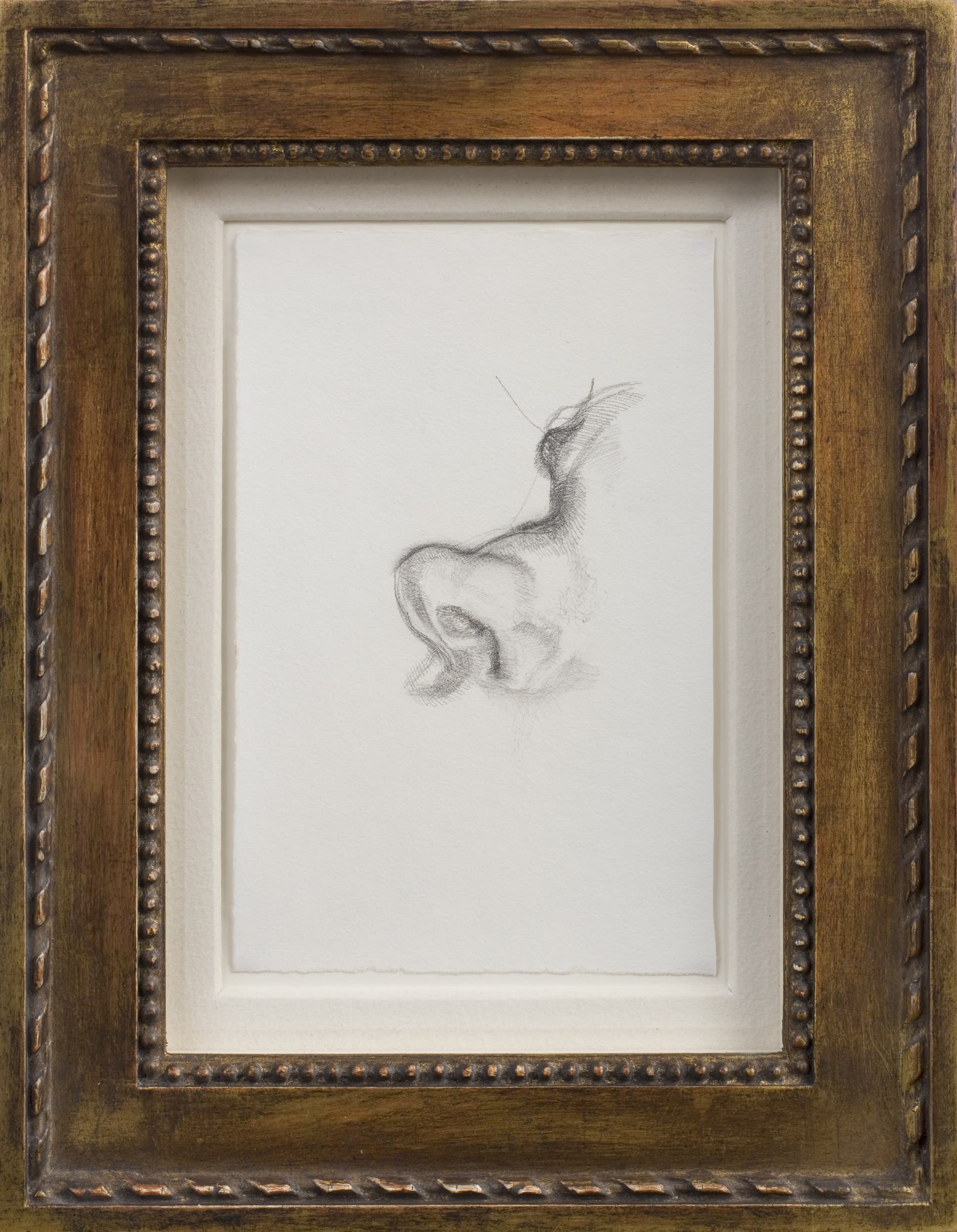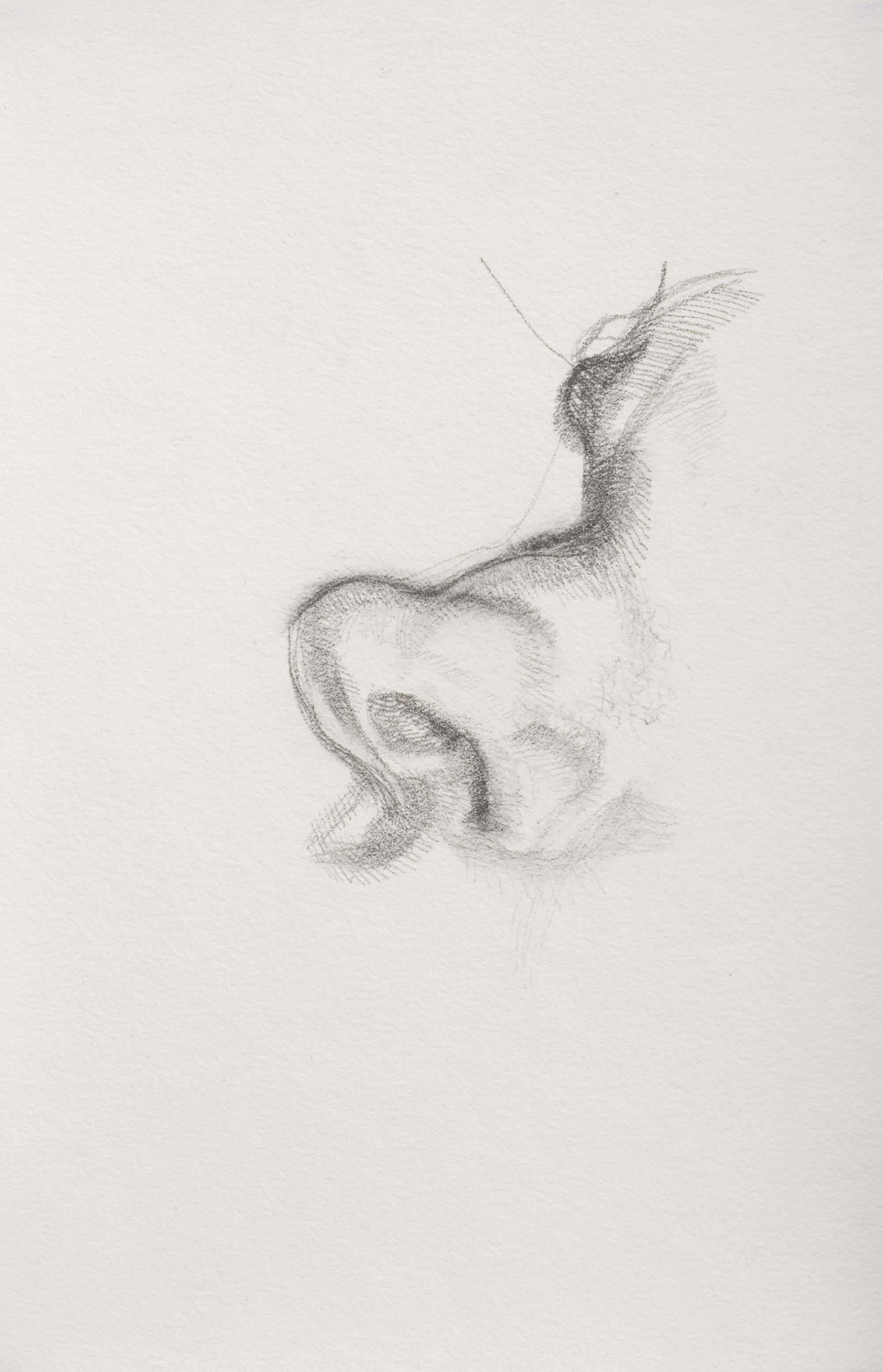After a brief period studying with the painter and gardener Cedric Morris, Lucian Freud developed his own distinctive and highly personal way of making pictures.
InSight No. 133
Lucian Freud | Nose (Janey Longman), circa 1986

It was Cedric Morris who originated the eccentric technique of making a picture by bringing to completion sequential segments of the canvas surface. He would begin at the top of the canvas and progress downwards until the whole surface was covered. Making pictures is difficult and most artists throughout history have preferred to undertake a modicum of preparation, even if merely sketching an outline onto canvas. In Morris's case, he preferred to work from life and resolve the picture detail by detail. In this way, creative energy was reserved for the act of applying paint itself. Although a degree of error was inevitable, errors were readily corrected by scraping down and reworking, and the finished painting had a rare intensity and directness seldom achieved by working from preparatory studies.
In spring 1939, Lucian Freud (1922-2011) went to attend the school run by Morris and his partner Arthur Lett-Haines in the village of Dedham, Essex. The East Anglian School of Painting and Drawing took an informal approach to classes and tutoring, and Freud later recalled its 'very strong atmosphere'. He admired Morris-'a real painter. Dense and extraordinary'-and observed his method of finishing a canvas in sequential sections, which he later described: 'Paint the background and the eyes and work down in one go. […] He used to start at the top, as if he was undoing something, with roof, sky, chimneys all along, and go down, like a tapestry maker'.
In Freud's own work, he mostly began with the central motif of his subject-the nose on a face or the genitals of a nude-and worked outwards, advancing the image in a frontier of sequential markings that seemed to reconstitute the morphology of muscle, sinew and flesh. This distinctive working method is apparent from the drawing Nose (Janey Longman), which was began one evening in a moment of repose. The informal circumstances of its making-it was not intended as a study for a painting-shows the operation of Freud's pictorial imagination. Having initiated the process with a central feature, he proceeded to develop surrounding areas with intense concentration. The modelling of light and shade over skin in the drawing is evoked with fine marks of silvery hatching, the direction of which follows the shape of the surface it describes.

Freud's interest in the nose of this particular sitter is also apparent from a contemporaneous painting of her entitled Girl with Closed Eyes. In this work she reclines to the left and her face is viewed in full from the front, the distinctive tip of her nose distinguished very slightly from the dorsum. Longman also sat for Naked Girl (1985-86) and, alongside India Jane Birley, Two Women (1992). It was she who suggested that Freud might paint their mutual acquaintance Francis Wyndham, which he did in 1993. Another mutual friend who came to sit for Freud was the fashion model Jerry Hall.
In some instances, Freud retained unfinished works in his studio and was subsequently content for them to be exhibited. Such pictures were successful up until the point at which Freud decided to stop working on them, with his biographer William Feaver describing them in their arrested state as 'spurts preserved'. They can be distinguished from unfinished failures, which were also retained for a time before being destroyed. Akin to Nose (Janey Longman), another example of an unfinished success went on display for the first time in June at the reopened National Portrait Gallery, which includes a room dedicated to the sketchbooks, drawings and letters donated by Freud's estate in 2016. This unfinished self-portrait is yet another visually arresting demonstration of how Freud worked outwards from the middle, the picture developing in an organic outward movement.


